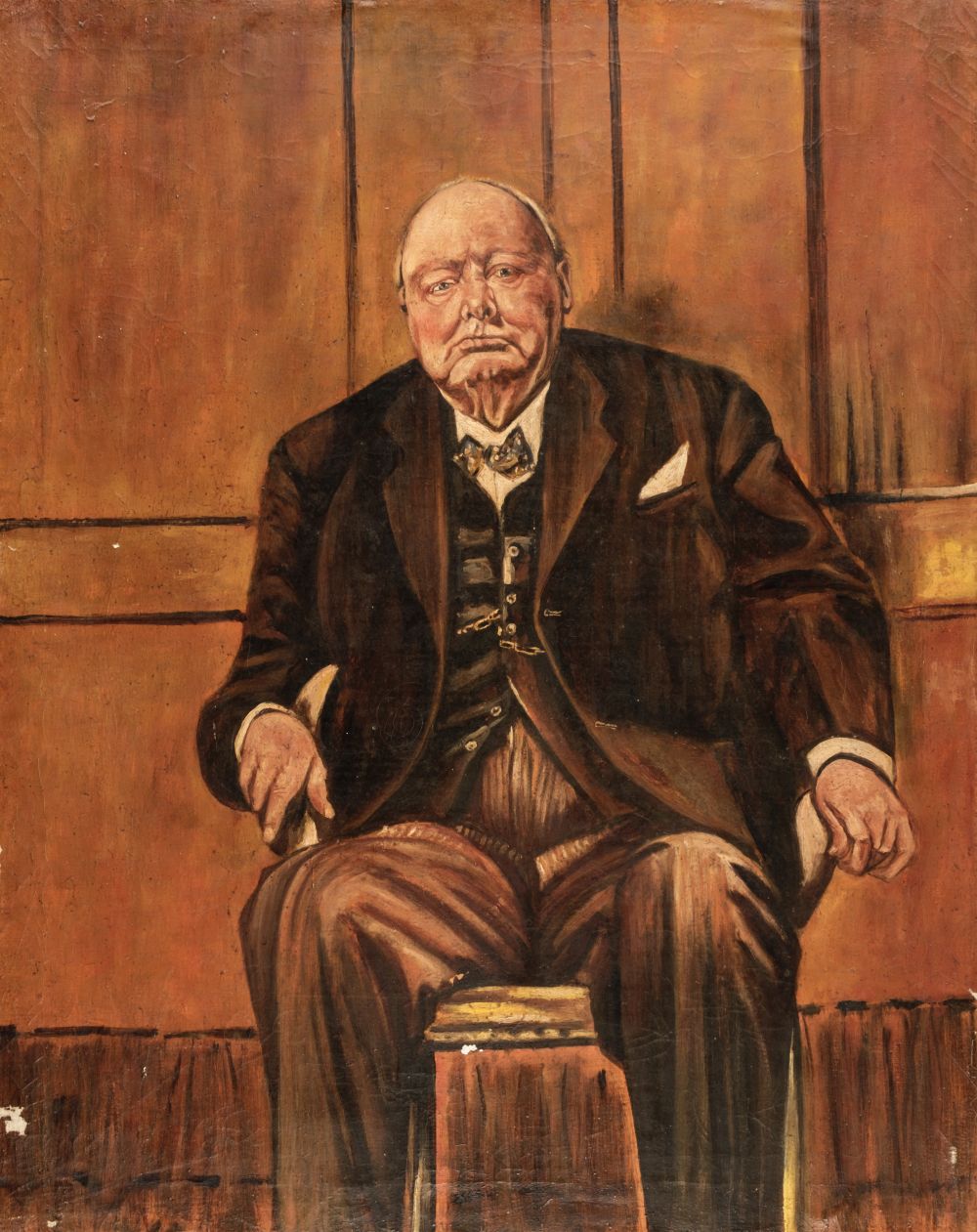

He continued this hobby into his old age, painting over 500 pictures of subjects such as his goldfish pond at Chartwell and the landscapes and buildings of Marrakesh. Winston Churchill was introduced to painting during a family holiday in June 1915, when his political career was at a low ebb. The studio that Churchill built for himself at Chartwell in the 1930s

Cannadine says that it is one of his earliest pieces, painted when he was still depressed after the failure of the Dardanelles expedition. Nearly always, Churchill was distinctly recognizable, a larger-than-life character whose presence caricature served only to magnify.An early self-portrait by Churchill showing him with a palette, dated to 1919/20. Some Punch cartoons were laudatory, some critical, and many humorous, like the man himself. To his persona and appearance he added myriad additional satirical temptations, not just props, like his cigars, siren suits, V-sign, and hats, but also a variety of ancillary avocations and vocations, like polo, painting, brick-laying, and writing. That Churchill was distinctive in both persona and physical appearance helped make him easy to caricature. It was a near-perfect relationship between satirists and subject. And throughout that time, Punch satirized Churchill in cartoons – more than 600 of them, the work of more than 50 different artists. That political career would last two thirds of a century, see him occupy Cabinet office during each of the first six decades of the twentieth century, carry him twice to the premiership and, further still, into the annals of history as a preeminent statesman. Punch or The London Charivari began featuring Churchill cartoons in 1900, when his political career was just beginning. After the ceremony, the portrait was stored unceremoniously in a Chartwell cellar until, with Lady Churchill’s approval, Churchill's longtime private secretary Grace Hamblin removed and burned it. He asked his solicitor, “Is it or is it not a libel? I won’t go down in history looking like that.” To his secretary he remarked “I look like a down-and-out drunk who has been picked out of the gutter in the Strand.” At the ceremony Churchill duly thanked the Houses for their generous gift which he called “a remarkable example of modern art”, a designation he undoubtedly intended to be pejorative and which was understood with great laughter from the audience. Though he was willing to publicly acquiesce, privately he made his opinion well known. Churchill expressed his opinion that the portrait would “bring an element of controversy into a function that was intended to be a matter of general agreement between the Members” and was therefore “not suitable as a presentation from both Houses of Parliament.” Dismayed, Sutherland contacted Charles Doughty, the secretary of the commissioning committee, who, acting as intermediary, was able to convince Churchill that the ceremony should continue as planned for the sake of national morale. She thanked Sutherland and asked for a photograph to bring back to Churchill, whose response reached the painter the following day. Just 10 days before Churchill’s birthday and the portrait’s official presentation, Clementine went to see the painting. The marquee event of the day was a televised ceremony in Westminster Hall where Churchill was presented with a portrait by Graham Sutherland, gifted to him jointly by the two Houses of Parliament. The cartoon shows Churchill, the painter, painting over a portrait he loathed.Ĭhurchill’s 80th birthday on 30 November 1954 was a day of national celebration.

The artist is Michael Cummings (1919-1997), who worked for Punch for more than 30 years. This cartoon appeared thus on p.182 of the 2 February 1955 issue of Punch. His book is the first ever effort to definitively catalog, describe, and contextualize all of the many Punch cartoons featuring Churchill. Stiles, author of Churchill in Punch (Unicorn Publishing Group, 2022). Churchill comes from the personal collection of Gary L. This original printed appearance of a Punch cartoon featuring Winston S.


 0 kommentar(er)
0 kommentar(er)
